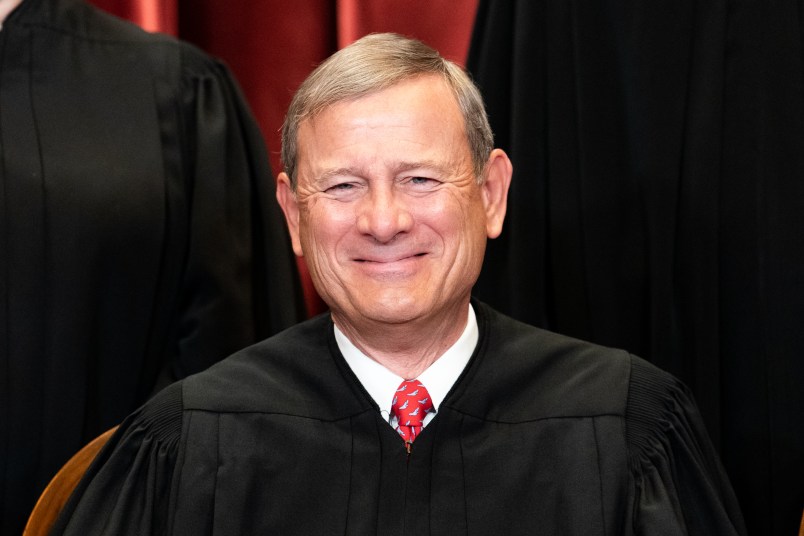It may be the highest court in the land, but how far can it go?
Donald Trump asked the U.S. Supreme Court on Wednesday to take his bid to stay on the ballot in Colorado. In a narrow sense, it’s very straightforward: Trump is asking the Supreme Court to reverse the Colorado state Supreme Court’s decision that disqualified him.
But the way that attorneys for the former president went about making the request — which the High Court is almost certain to take — raises other questions.
The U.S. Supreme Court faces a number of constraints in what issues it can consider. The court will have to defer, for example, to the Colorado state Supreme Court for questions about Colorado election law and for questions about who has standing to bring a lawsuit.
Before getting to the bigger question that interests Trump — did Jan. 6 qualify as an insurrection under the 14th Amendment? — the Supreme Court has many offramps. It could, for example, rule that Congress would need to act in order for the Disqualification Clause to have effect; it could also take up the view of conservatives who argue that the clause conveniently applies to everyone who participated in an insurrection except the president.
Deciding the case on those threshold issues would allow the court to avoid the much thornier questions which arise on the merits. But oddly enough, Trump invites the court to dig into the merits.
In the petition, Trump asked the Supreme Court to “reverse” the Colorado state Supreme Court’s “holding that President Trump ‘engaged in insurrection.'”
That request, appellate attorneys told TPM, opens up two questions. One goes to state law.
Trump’s attorneys spent part of the petition arguing that, in fact, the Colorado state Supreme Court erred on issues of state law — an area typically beyond the power of the Supreme Court of the United States to decide.
“They can’t say Colorado interpreted its own rules wrongly,” David Schultz, a law professor at the University of Minnesota, told TPM.
The Supreme Court will be bound by the evidentiary record established in the trial court proceeding. It’s not a fact-finding body; it interprets Constitutional law.
In order to do what Trump’s attorneys ask, Shultz said, the High Court would have to say that the Colorado jurists deprived Trump of his due process rights through the way in which they held the evidentiary hearing.
The second question raised by Trump’s request that the Supreme Court dig into the Colorado insurrection finding is more subtle, but goes to the heart of the issue: did Trump engage in insurrection under the terms of the 14th Amendment?
This is where some scholars have seen a way for the court to split the baby. Steve Vladeck wrote last month that the Supreme Court could do what the Colorado trial court did: find that Trump engaged in insurrection, but use a threshold issue to keep him on the ballot.
“If anything, having Republican appointees joining Democratic appointees in holding that Trump did engage in insurrection might go a long way toward persuading those who are capable of being persuaded to cast their vote for someone else,” he wrote.
But for Trump, inviting the court to weigh in on the underlying evidentiary issues — and not restrict it to the threshold issues that could prevent any discussion of insurrection from happening at all — opens up a potential thicket of issues.
“It’s a dangerous one. And at that point, he’s gotta hope that the court agrees,” Schultz said. “Because at that point, the court may very well be bound by the decision by the district court in Colorado. That was, in terms of the fact finding at that point, a very risky move for him.”







They’re never going to reach the merits. They have a really easy and obvious glidepath towards holding that it’s non-justiciable because Congress hasn’t passed enabling legislation to allow courts to adjudicate it.
> “It’s a dangerous one. And at that point, he’s gotta hope that the court agrees,” Schultz said. “Because at that point, the court may very well be bound by the decision by uthe district court in Colorado. That was, in terms of the fact finding at that point, a very risky move for him.”Hmmmm, with this SCOTUS, it’s not that much of a risk… and besides, he’s got to try, literally, anything and everything to get himself elected and/or out of jail.Edited to withdraw, in light of @txlawyer’s expertise
Awaiting a decision and rationale from a known to be corrupt and politicized Court, 1/3 of which was appointed by The Defendant, and who could legitimately be recused from the case, but who won’t. Thus setting a precedent for all time. Why do I feel the Constitutional order crumbling beneath my feet?
Such deference is to be commended!
SCOTUS justices have never recused from a case just because they were appointed by a particular president.